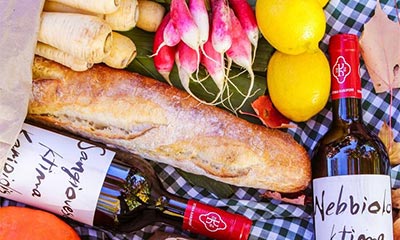From Boring to Brilliant: Reimagining Children's Midday Meal
Did you know that nearly 60% of children's lunches lack the recommended servings of fruits and vegetables? You've likely packed your fair share of midday meals that met with a lukewarm reception. It's time to transform these mundane meals into exciting, nutritious feasts that kids are enthusiastic to eat. Think beyond the typical sandwich and apple combo by incorporating vibrant, fun, and culturally diverse foods that will not only satisfy their taste buds but also fuel their growing bodies and minds. What if you could see those lunchboxes come home empty with your kids asking for more? Let's explore how you can make that happen.
Understanding Children's Nutritional Needs
A balanced diet is fundamental for children's growth and development, providing the nutrients they need to learn and thrive. You've probably heard it before, but let's explore what this really means for your child's meals, especially at midday when energy levels must be maintained for school activities.
Firstly, carbohydrates are essential; they're the primary energy source. Opt for whole grains like brown rice or whole wheat pasta, which release energy gradually, unlike refined carbs that lead to energy spikes and crashes.
In addition, proteins are crucial for muscle repair and growth. Include lean meats, beans, or tofu to guarantee your child's body gets the right building blocks.
Don't overlook the importance of fats, particularly the healthy ones found in fish, nuts, and avocados, which are critical for brain development.
Additionally, make sure they're getting a colorful variety of fruits and vegetables. These aren't just visually appealing; they offer essential vitamins and minerals.
Lastly, hydration plays a subtle yet fundamental role. Water is often the best choice. It helps in digestion and maintaining peak cognitive function throughout the school day.
The Psychology Behind Exciting Meals
Beyond nutrition, the excitement around meal presentation greatly boosts children's interest in eating. When you transform a plate into a colorful canvas, you're not just serving food, you're engaging your child's senses and emotions. This strategy taps into the psychological concept known as 'sensory appeal,' which increases the likelihood of a child trying and enjoying new foods.
It's about making mealtime visually appealing and fun, which can be particularly effective for picky eaters. Research indicates that children are more likely to eat food that looks attractive and familiar. By incorporating elements of play and creativity into their dishes, you're also promoting positive food experiences. This can lead to better eating habits over time. For instance, shaping sandwiches into stars or creating smiley faces with fruits and vegetables can make a significant difference.
Moreover, involving children in the meal preparation process can heighten their interest and appreciation for their food. It provides an opportunity for learning and bonding, while simultaneously giving them a sense of control and achievement. This emotional connection to food can enhance their desire to eat what they've helped to create, making mealtime both enjoyable and educational.
Easy Recipes for Busy Parents
To help you navigate your hectic schedule, try these simple, quick-to-prepare recipes designed for busy parents.
First up is the ten-minute taco bowl. You'll need pre-cooked ground meat, which you can season with a taco mix. Toss this in a bowl with canned beans, chopped lettuce, diced tomatoes, and a sprinkle of cheese. It's nutritious, filling, and you can customize it with whatever's on hand.
Another lifesaver is the one-pan pasta. Boil your choice of pasta, and about three minutes before it's done, add chopped veggies like broccoli or spinach. Drain and return to the pan with a jar of your favorite sauce and a splash of olive oil. Stir over low heat until everything's warm. It's a one-pot wonder that saves on cleanup.
Lastly, don't overlook the classic wraps. Spread hummus on a whole wheat wrap, layer with turkey, cheese, and any crisp veggies your kids enjoy. Roll it up, and it's ready to go. This is perfect for those days when even ten minutes for meal prep seems too much.
These ideas aren't just quick; they guarantee you're not sacrificing nutrition for speed. Try rotating them throughout the week to keep things interesting!
Incorporating World Flavors
Exploring global cuisines can add an exciting twist to your child's lunchbox, offering them a taste of different cultures right from their meal tray. Introducing a variety of world flavors not only diversifies their palate but also enhances their understanding and appreciation of global diversity.
Start simple by incorporating dishes like Japanese sushi rolls or Mexican quesadillas, both of which are fun and easy for kids to eat. You can also prepare Italian mini frittatas or Indian vegetable samosas ahead of time, ensuring a quick grab-and-go option during hectic mornings.
These meals pack a punch of flavor and can be adjusted for spice levels and ingredients based on your child's preferences. To make it educational, include a small note explaining the origin of the dish and any fun facts related to the cuisine, encouraging a deeper connection with the meal.
Balancing nutrition with these diverse options is key. Include a side of fruits or veggies that complements the main dish. For example, a light cucumber salad pairs well with spicy dishes, providing a cooling effect.
Fun With Shapes and Colors
Incorporating fun shapes and vibrant colors into your child's meals can greatly boost their interest and enjoyment in eating healthy. It's not just about making food look attractive; it's about engaging your child's senses and encouraging a positive attitude towards nutritious foods.
By cutting fruits and vegetables into stars, hearts, or animal shapes, you're not only making their plate more appealing, but you're also sparking their imagination and curiosity about what they're eating.
Think about how a bright red tomato or a deep green spinach can draw the eye. Integrating a rainbow of colors doesn't just brighten the meal; it guarantees a variety of vitamins and minerals.
Each color represents different nutrients that contribute to your child's growth and health. For instance, orange in carrots provides beta carotene, while blue in blueberries offers antioxidants.
Interactive Lunchbox Ideas
Many interactive lunchbox ideas can transform your child's midday meal into an exciting, engaging experience.
How about starting with a DIY taco kit? Pack separate containers of shredded cheese, diced tomatoes, lettuce, and seasoned ground meat. Your child can have fun assembling their taco at lunch, giving them a sense of control and creativity over their meal.
Another great option is to include a salad bar in a box. Provide a base of greens and a variety of toppings like sliced cucumbers, cherry tomatoes, croutons, and a small container of dressing. It's not only fun but teaches them how to build a healthy, balanced meal.
For a hands-on snack, try making fruit skewers that they can dip into yogurt or a nut-free chocolate spread. This encourages them to play with their food in a good way, mixing and matching as they please.
Don't forget a build-your-own sandwich kit. Pack slices of whole-grain bread, turkey, and Swiss cheese, along with small lettuce leaves and cucumber slices. This type of interactive lunch keeps lunchtime novel and might even encourage pickier eaters to try new foods when they're involved in the assembly.
Allergy-Friendly Substitutes
While you pack interactive and fun meals, it's important to contemplate allergy-friendly substitutes that guarantee everyone's safety and inclusion. Steering through food allergies can seem intimidating, but with a bit of creativity, you can create enjoyable and safe options for all children.
First, consider the common allergens: nuts, dairy, eggs, and gluten. Thankfully, there are numerous alternatives available that are both safe and nutritious. For instance, if you're dealing with a nut allergy, seeds like sunflower or pumpkin can be great substitutes in recipes calling for nuts. These provide similar textures and nutritional benefits without the risk.
When it comes to dairy, the variety of plant-based milks and yogurts made from oats, almonds, or coconuts provides ample choice. They're perfect for smoothies or cereal. For egg allergies, products like applesauce or mashed bananas can serve as binding agents in baked goods.
Here are a few simple swaps to keep your meals allergy-friendly:
Replace peanut butter with sunflower seed spread.
Use coconut yogurt instead of dairy yogurt.
Opt for gluten-free pasta made from rice or quinoa.
Substitute egg in recipes with chia seeds soaked in water.
Seasonal Ingredients Guide
Exploring seasonal ingredients can elevate your child's midday meal with fresh, nutritious, and flavorful options. By incorporating fruits and vegetables that are at their peak, you're not only ensuring maximum taste but also excellent nutritional benefits.
For instance, in the spring, you can introduce asparagus and strawberries, which aren't only delicious but also packed with vitamins. Summer brings a bounty like tomatoes and berries, bursting with antioxidants and hydration properties perfect for those warmer days.
As you shift into fall, think about including squash and apples. Squash is versatile and rich in fiber and vitamin A, while apples offer a sweet crunch that's great in both raw and cooked dishes. Winter requires hearty choices like kale and citrus fruits; these can help boost the immune system during colder months.
You'll also find that local markets provide the freshest options, which tend to be more affordable when in season. This practice supports local farmers and reduces your carbon footprint, making it both a sustainable and an economically smart choice.
Educational Meal Themes
Introducing educational meal themes can transform your child's lunchtime into a fun and engaging learning experience. By integrating subjects like history, geography, science, and art into their meals, you're not only feeding their bodies but also fueling their curiosity and knowledge. This approach encourages children to explore new flavors and cultures while connecting their eating habits with learning.
Consider these themed meal ideas:
World Explorer Lunch: Serve dishes from different countries each week. You could start with sushi from Japan, tacos from Mexico, or pasta from Italy. This exposes them to global cuisine and can spark conversations about world geography and cultures.
Dinosaur Day: Craft meals inspired by the prehistoric era. Think about serving chicken drumsticks as 'dinosaur legs' or arranging veggies in the shape of a dinosaur. This can be a playful way to discuss history and science topics such as the Mesozoic Era and dinosaur types.
Art Palette Plate: Use colorful fruits and vegetables to create a vibrant, edible palette. This can inspire discussions on color theory and famous painters, making it a visually and intellectually stimulating meal.
Space Shuttle Snacks: Design meals that look like rockets or planets using round fruits or wraps. It's a great way to introduce them to astronomy and discuss the solar system and space missions.
Encouraging Healthy Eating Habits
After exploring fun and educational meal themes, it's important to focus on fostering healthy eating habits in children. You can play a significant role by introducing a variety of foods at an early age. It's not just about offering vegetables and fruits; it's about making these options appealing and routine.
Try integrating them in ways that don't overshadow their texture or taste—think smoothies, colorful salads, or homemade veggie dips.
You should also consider the presentation of these healthy choices. Children are often more willing to try new foods when they're presented in an engaging manner. Use cookie cutters to create fun shapes out of melons or cucumbers, or arrange a plate in the form of their favorite cartoon character using different types of produce.
Moreover, involve your kids in the meal planning and preparation process. This engagement can increase their interest in eating what they've helped to make. Explain the benefits of each ingredient as you go, making the connection between good food and a healthy body clear and understandable.
Lunch Packing Tips and Tricks
How can you guarantee your child's lunchbox is both appealing and nutritious? It starts with creativity and a dash of planning. Here are some practical tips to transform those mundane midday meals into something your kids will look forward to.
First, balance is key. Make sure each lunchbox includes a good mix of proteins, carbs, and fats to keep energy levels steady. Include lean meats or beans, whole grains, and some healthy fats like avocado or nuts.
Next, think color and texture. Kids eat with their eyes too, so bright, crunchy veggies and fruits can make the meal more enticing. Using fun and colorful kids lunch boxes can also enhance the presentation, making meals more appealing and exciting.
Here's a quick list to help you pack like a pro:
Theme Your Meals: Make lunch fun with themes like “Picnic Day” or “Superhero Strength” to stoke their imagination.
Involve Your Kids: Let them pick some of the items that go into their lunchbox. They're more likely to eat what they've chosen.
Prep in Advance: Cut up fruits and veggies, or prepare bulk items like pasta or rice at the start of the week.
Reusable Containers: Use compartmentalized containers to keep foods separate and appealing.
Implementing these tips can turn the midday meal into a highlight, making sure they're fueled both physically and mentally for the day.
Conclusion
So, you've journeyed through the art of transforming mundane midday meals into inspiring, nutritious feasts for your kids.
By embracing vibrant colors, worldly flavors, and creative presentations, you're not just filling lunch boxes; you're nurturing curious minds and growing bodies.
Remember, every playful shape, every seasonal bite, and every thoughtful theme is a step towards lifelong healthy habits.
Keep it fun, keep it fresh, and watch your little ones thrive with every brilliant meal you craft.








Comments